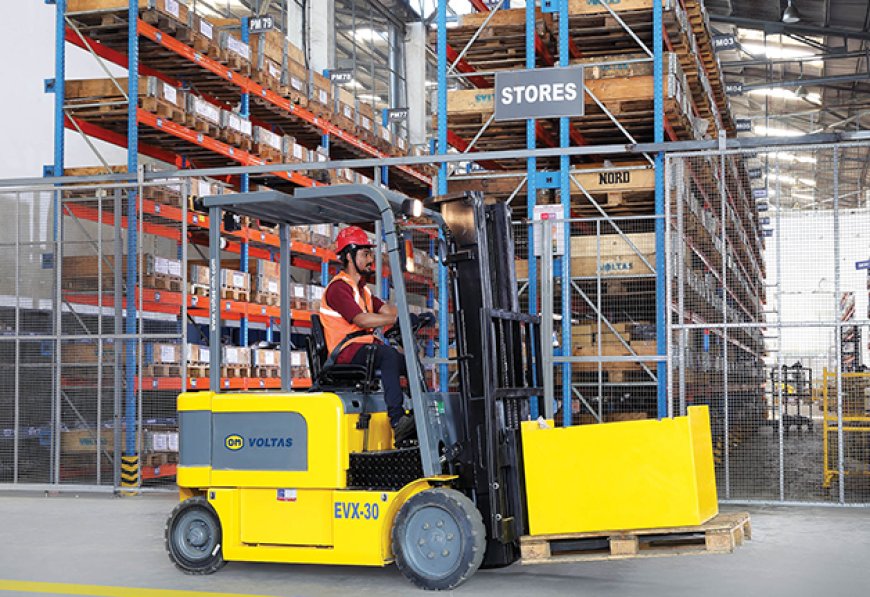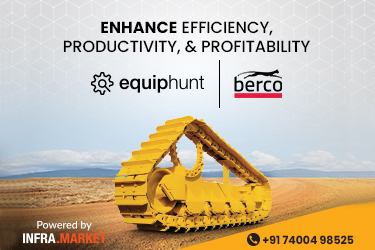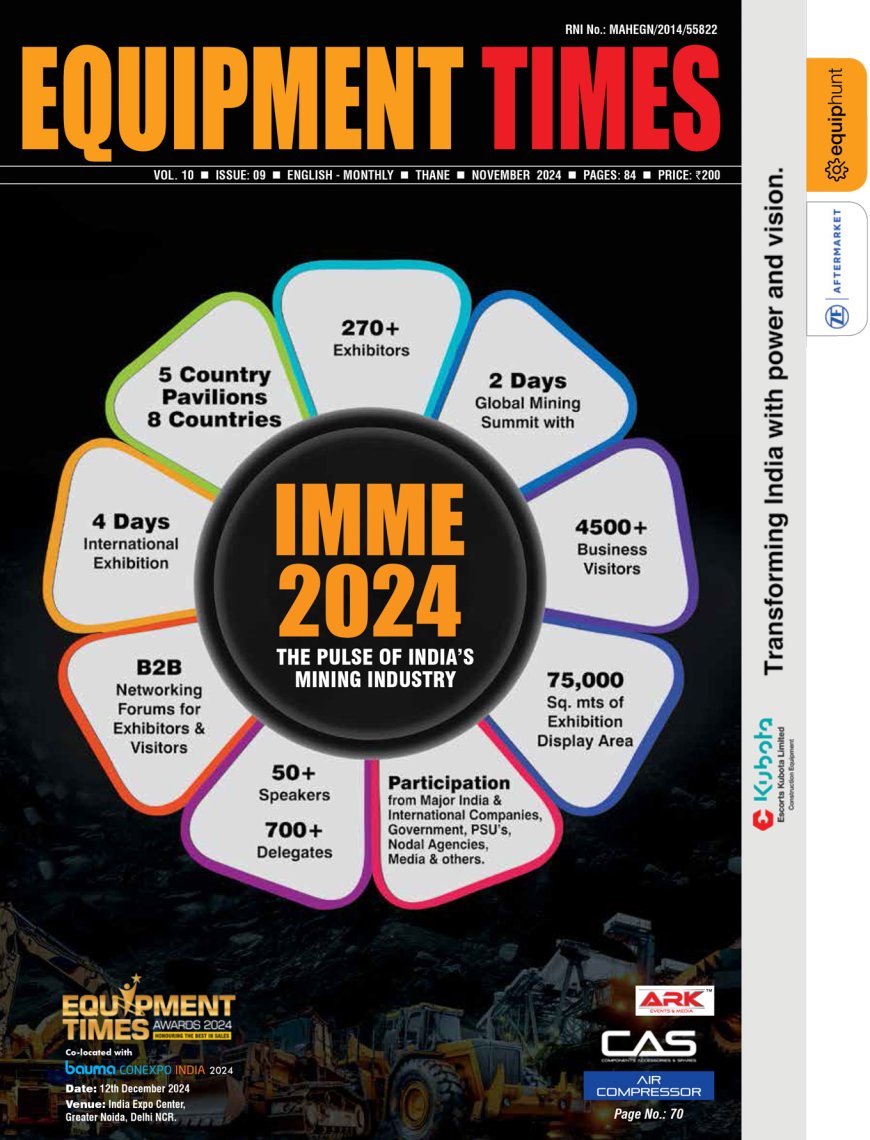On the Winds of Change
With the tailwinds of GST implementation, the trends towards making the logistics value stream more efficient and to meet economies of scale, material handling and warehousing equipment will play a major role. Driven by growth in GDP, maturing industry segments,

![]()
With the tailwinds of GST implementation, the trends towards making the logistics value stream more efficient and to meet economies of scale, material handling and warehousing equipment will play a major role.
Driven by growth in GDP, maturing industry segments, rising share of organised retail, modern warehousing in India is growing at a rapid pace. Entry of global 3PLs has led to the re-modeling of the supply chain, including logistics and warehousing services and implementation of GST is expected to completely revamp the business dynamics. From a mere combination of transportation and storage services, logistics is fast emerging as a strategic function that involves end-to-end value-added solutions to improve the efficiency of the supply chain. These
have had its transformational
impact on the material handling equipment industry.
Growth Drivers
Currently the Indian industry is evolving at a rapid pace and the major players expect a healthy demand across all the different industry verticals. Says Sunil K Gupta, CEO & Managing Director, KION India: “Continuous increase in industrial production and modernization of logistics infrastructure backed by increased government spending on infrastructure and a push for manufacturing have been driving the business forward. The market has slightly slowed down in Q1 17 but is expected to go up in H2. GST will be a catalyst for the industry.”
“Similar to other countries, in India, the growth of the material handling equipment industry is tied to that of the manufacturing and trading activity. MHE sales are also linked to the distribution and logistics chain. These two sectors are yet to see government action in terms of GST implementation, land reforms and labour reforms. These have a big impact on manufacturing, logistics and distribution industries,” points out Canvas Dumasia, Vice President Marketing, Godrej& Boyce Material Handling Division.
MHE Market Trends
As the market is maturing and the requirements are evolving the industry is witnessing emergence of some distinct trends. “Electric counterbalanced lift trucks are being preferred more over IC engine driven lift trucks. With the emergence of logistics and warehousing industry riding on the tailwinds of growth in e-commerce, a trend of using high end, high productivity and high reliability equipment is emerging,” says TusharMehendale, Managing Director, ElectroMech. He adds, “In our estimate, while the overall demand will keep on increasing steadily, there will be a definite shift in the share of the market with a clear shifting of preference of end users towards equipment employing the latest technologies, offering high rates of productivity and enhancing safety in the operations.”
Speaking about the changing buying pattern of the customer Gupta says: “Customers are looking for complete material handling solutions and not just material handling equipment. Fleet management and supply chain solutions segments are expected to grow. KION India is fully geared up to become most preferred material handling solutions provider for Indian customers.”
Tech Trends
Electric mobility is the name of the game in the lift trucks industry and one sees a global trend of customers shifting their preferences to electrically operated lift trucks. “Newer technological developments like better control systems, regenerative braking, efficient motors, smoother drive trains coupled with the innovations in batteries, have led to electric lift trucks being able to run for a higher period of time as compared to earlier times. Electric lift trucks have zero emissions and are extremely quite in operation. This leads to a better work environment and enhances the HSE of a manufacturing plant / warehouse,” avers Mehendale. According to him there is a definite trend towards customers opting for electric lift trucks over diesel lift trucks.
Dumasia stresses the shift towards greener technology. He states, “As the indoor usage of forklifts grows across warehouses, factories, etc. the need for cleaner technologies is felt. With concerns over vehicular pollution growing and the latest green technology becoming affordable, battery powered forklifts are starting to get better volumes. Manufacturers are adopting clean technologies because of the growing concern on vehicular pollution. Eventually, the demand for forklifts will shift towards clean and green technology i.e. battery operated forklifts.”
Dumasia also explains the changing trends from power front. Battery technology currently is restricted to lead acid wet type batteries. This is a proven technology with its positives and negatives, well understood by users. Newer technology such as Lithium ion batteries, etc will improve user experiences and meet customer demands of fast charge and charge as required etc. These technologies are yet to be proven for tough and demanding applications. According to him in battery powered forklifts, there have been rapid advancements in technology. The latest AC technology is overtaking the DC technology due to its inherent benefits such as higher efficiency and lower maintenance. This has brought the performance characteristics of battery powered forklifts closer to diesel forklifts. He adds, “Godrej Material Handling (GMH) is the first Indian forklift manufacturer to offer AC technology in its products to its customers.”
Engine technology has more or less remained constant except for the stricter emission norms, as advances in forklift engines technology are dependent on country-specific emission norms. However, at the same time fuel efficiency is something that an increasing number of customers are laying importance on. Today equipment with good fuel efficiency has a distinct advantage and will be the one in demand.
According to Gupta there is high growth projection in electric and warehousing segments. “Electric forklift market is expected to grow due to a shift towards environment friendly products. WHE market is growing rapidly for the past few years due to increasing space crunch and a push for increased productivity and efficiency in segments like e-commerce. The combined share of E and WH segments is expected to grow by around 8-9 percentage points by 2022 eating into the share of IC segment which is currently around 40% of the market. We have geared up for this growth and are continuously gaining market share in the E and WHE segments due to our comprehensive value for money product range that is fit for the Indian market,” avers Gupta.
Gupta further adds, “Market is witnessing a demand for cost effective products with enhanced features, leading to growth in the value for money segment. There is a need for more efficient and reliable products. For making the products user friendly and safer, we provide techniques like height pre-selection, operator sensors, overload protection, travel speed control and lift speed control. Our R&D team located in Pune is continuously connected with global R&D centers and working along with them on world class technological solutions to suit the evolving market needs.”
Articulated Forklifts
There has been an increased demand for a product that works both as forklift and warehouse equipment, in indoor and outdoor application as well. Single equipment eliminates the need for double handling, moves pallet from lorry to rack in one step. GMH offers articulated forklift with lift heights upto 12 m and aisle width as low as 1.6 m requiring minimum space for operations and performing dual role of a forklift as well as warehouse equipment.
On-board Technology
Technology deployment and its subsequent adoption depend very much as to where a particular market is on the life cycle curve. In countries like India, the demand is slowly but surely changing from basic de-featured lift trucks to a lift truck that has on board diagnostics, driver assist features as well as telemetry. Currently, due to the low scale of operations (as compared to developed countries) in majority of the plants, there aren’t enough incentives to spend a lot of money on equipment. This is the foremost hurdle in implementing sophisticated on-board technologies on lift trucks. However, all trends in India are pointing towards increasing sophistication in the requirements of the customers and pretty soon we will be seeing a definite shift towards ‘high technology’ lift trucks, elaborates Mehendale.
Logistics Trends
Compared to the developed markets where containerization and palletization is the norm,, we still lag behind. Mehendale points out some of the reasons. “The main reason for this lag is the historical lack of standardization across the supply chain. This standardization didn’t happen so far on account of low volumes and dearth of proper infrastructure – trucks, roads, material handling equipment, etc.” However he adds, “With the Indian industry getting itself more aligned with the international trends and with a lot of MNCs driving innovation in supply chains and logistics, the trend towards palletization is increasing. All the export oriented companies as well as subsidiaries of MNCs have already resorted to dispatching goods in standard pallets.”
He adds, “Furthermore, the trends towards making the logistics value stream more efficient and with the tailwinds of GST implementation, economies of scale will be achieved and will potentially lead to creation of necessary infrastructure that promotes palletization and containerization. Mehendale further adds, “Naturally, lift trucks are at the forefront of helping companies handle their pallets within the factories / warehouses as well as for loading into and unloading from the containers. We expect a good demand for different types of forklifts on account of these changes.”
Market Size & Segments
As per the industry inputs the size of the MHE industry is approximately 9000-10000 units per annum and it expects a double digit growth in coming years with higher than average growth in E and WHE segments. Light forklifts with capacity of 1.5 to 3T constitutes the major chunk of the market with 85% of the MHE market while medium forklifts with capacity of 4 to 8T make up around 10%, and heavy duty (8T and above) accounts for less than 5% of the market.
Customer Segments
Lift trucks are used across a host of different industries. Some of these industry verticals are manufacturing, pharmaceuticals, warehousing and logistics, food and beverage and FMCG. Each vertical has its own unique requirements. For example, in case of a general manufacturing industry, the requirements will typically be for a lift truck having a capacity of 3T and above driven either electrically or by an IC engine. Warehousing and logistics customers typically require stackers and pallet trucks handling loads in the range of 1T – 1.5T but having extremely high speeds and high levels of productivity. In case of Pharma and Food industry, the requirements are pretty stringent from point of view of ‘cleanliness’ of operations. These industries will typically also require lift trucks that are suitable for operation in cold stores where temperatures could be as low as -200C.
Warehousing Trends
With the changing business dynamics, growth of 3PL and big bang of e-commerce industry, the growth story for the warehouses has just begun. According to Dumasia GST will trigger a consolidation of hitherto numerous, smaller warehouses into fewer but large capacity locations, which will then find mechanized handling of material a profitable option. Smart warehouse is most common used term and heard these days across supply chain professionals. This clearly depicts the importance of highly productive and efficient warehouse in complete supply value chain. Large scale warehouses are able to attain benefits through technological sophistication by using state-of-the-art planning and warehouse management systems which aren’t feasible to be used in smaller and scattered warehouses.
That augurs well for the MHE solution suppliers.
Hits: 152











